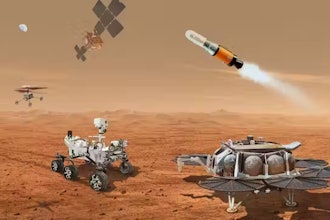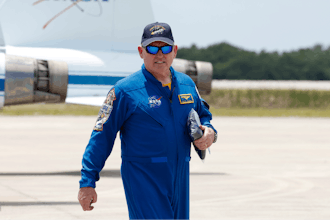After landing a re-usable rocket on a barge, SpaceX is moving quickly ahead with a new plan – taking their spacecraft to Mars.
CEO Elon Musk has spoken out in favor of colonizing Mars before: putting humans on other planets has been one of SpaceX’s goals since the company was founded in 2002. He’s also talked about some big ideas for terraforming the planet to allow for human life without the need for highly engineered shelters.
Before that, though, a crewed spacecraft has to be able to land on the Red Planet.
The announcement on Wednesday featured the reveal of the Red Dragon, a version of the Dragon cargo capsule currently in use by NASA. The crew capsule would need to be much larger than the existing Dragon in order to accommodate a crew to go to Mars, and SpaceX is still working on the design for a capsule that can hold eight human crewmembers.
In 2013, the company put out a promotional video showing a Mars lander that looks a lot like the proposed Red Dragon. The Red Dragon would use its boosters to slowly lower itself onto the Martian surface – presenting the same kind of challenges that landing on the barge did.
The Red Dragon could launch using a Falcon Heavy, the 27-engine big brother of the Falcon 9 rocket, which is designed specifically to send humans to space.
And Musk’s quick timeline isn’t slowing down any time soon.
With a target date of May 2018, the next available launch window for Mars missions, this is an ambitious goal for a company that seems made of ambition – and also willing to learn from its mistakes, as shown during the several, anticipated failed attempts at the drone landing.
Sending a commercial spacecraft to Mars just to see it tip over would be an anticlimactic hello to the Red Planet – but would still push human space exploration. While NASA isn’t funding any of SpaceX’s Martian endeavors, they do have a partnership in place in which SpaceX will be able to use the Deep Space Network of radio antennas for communication, and NASA can use SpaceX’s data.
In other SpaceX news, the company today won its first military contract, competing against Boeing and Lockheed for the prize of launching a GPS satellite in May 2018 – around the same time SpaceX plans to head for Mars.






















